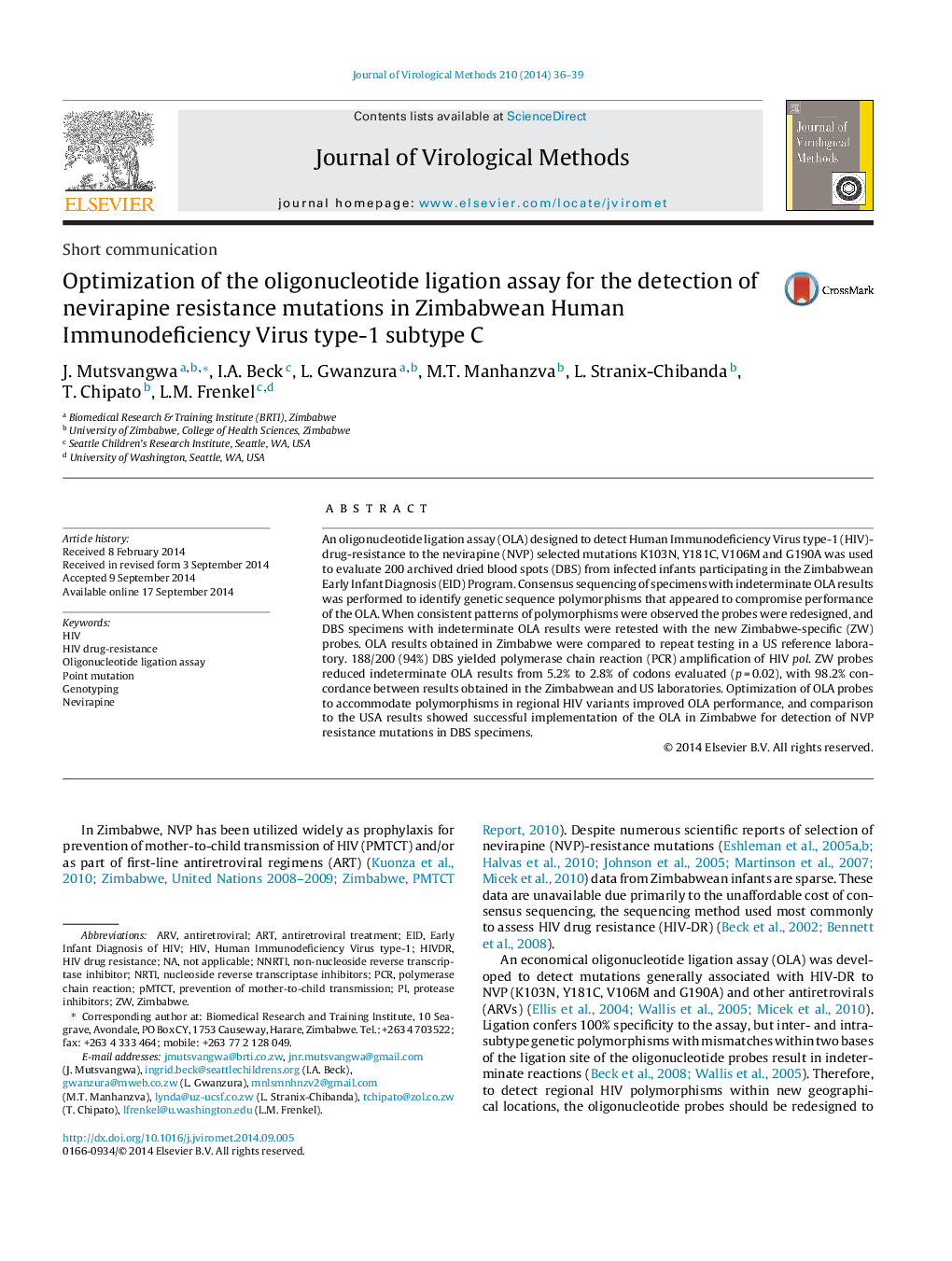| Article ID | Journal | Published Year | Pages | File Type |
|---|---|---|---|---|
| 6133448 | Journal of Virological Methods | 2014 | 4 Pages |
â¢The oligonucleotide ligation assay (OLA) can detect point mutations encoding HIV-drug-resistance.â¢The ligation confers specificity, but depends on annealing of the probes to target sequences and complementary bases for two positions adjacent to each side of the ligation site.â¢Genetic polymorphisms in target DNA can compromise ligation of probes, and significantly increase the proportion of indeterminate tests.â¢Modifying probes to anneal to regional HIV genotypes can increase the proportion of valid assays.
An oligonucleotide ligation assay (OLA) designed to detect Human Immunodeficiency Virus type-1 (HIV)-drug-resistance to the nevirapine (NVP) selected mutations K103N, Y181C, V106M and G190A was used to evaluate 200 archived dried blood spots (DBS) from infected infants participating in the Zimbabwean Early Infant Diagnosis (EID) Program. Consensus sequencing of specimens with indeterminate OLA results was performed to identify genetic sequence polymorphisms that appeared to compromise performance of the OLA. When consistent patterns of polymorphisms were observed the probes were redesigned, and DBS specimens with indeterminate OLA results were retested with the new Zimbabwe-specific (ZW) probes. OLA results obtained in Zimbabwe were compared to repeat testing in a US reference laboratory. 188/200 (94%) DBS yielded polymerase chain reaction (PCR) amplification of HIV pol. ZW probes reduced indeterminate OLA results from 5.2% to 2.8% of codons evaluated (p = 0.02), with 98.2% concordance between results obtained in the Zimbabwean and US laboratories. Optimization of OLA probes to accommodate polymorphisms in regional HIV variants improved OLA performance, and comparison to the USA results showed successful implementation of the OLA in Zimbabwe for detection of NVP resistance mutations in DBS specimens.
